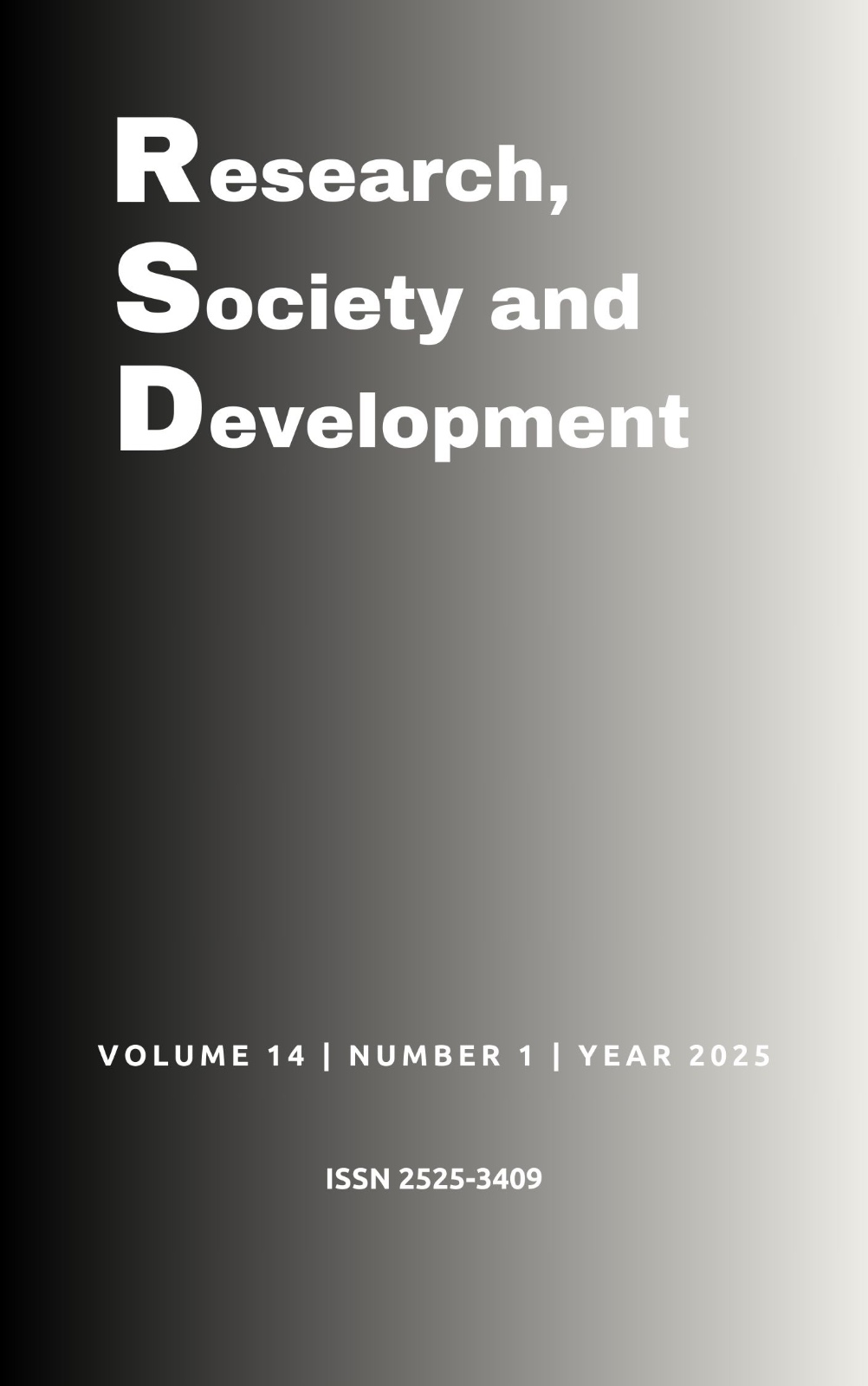O uso do propranolol oral no tratamento da retinopatia da prematuridade: Relato de caso
DOI:
https://doi.org/10.33448/rsd-v14i1.47944Palavras-chave:
Retinopatia da prematuridade; Recém-nascido prematuro; Propranolol; Ensino em saúde; Ensino.Resumo
Introdução: A retinopatia da prematuridade (ROP) é uma das principais causas de cegueira em crianças, afeta principalmente os recém nascidos de muito baixo peso e baixa idade gestacional. É uma doença que requer triagem e detecção oportunas para orientar melhora o tratamento. As terapias atuais são invasivas, caras e parcialmente eficazes, recentemente o propranolol oral tem sido eficaz como prevenção ou tratamento da retinopatia pré limiar com bons resultados. Objetivos: Relatar o caso clínico de um prematuro extremo com diagnóstico de retinopatia da prematuridade que recebeu propranolol oral e evoluiu com melhora considerável da patologia. Métodos: Os dados serão obtidos através do prontuário médico eletrônico e de papel. O estudo será iniciado após o preenchimento do Termo de Consentimento Livre e Esclarecido (TCLE) pela responsável legal da paciente seguida a aprovação pelo Comitê de Ética em Pesquisa. Trata-se de um estudo do tipo observacional e descritivo, sem grupo controle, em formato de relato de caso clínico. Resultados/Conclusão: Sua relevância científica está na importância e necessidade de novos recursos terapêuticos, menos invasivos, para uma patologia tão comum em prematuros.
Referências
Avery, R. L., Pearlman, J., Pieramici, D. J., et al. (2006) Intravitreal bevacizumab (Avastin) in the treatment of proliferative diabetic retinopathy. Ophthalmology. 113, 1695-705.
Bancalari, A., & Shade, R. (2020). Retinopatía del prematuro: Actualización em detección y tratamento. Rev Chil Pediatr. 91(1), 122-130
Bancalari, A., Shade, R., Muñoz, T., et al. (2016). Oral propranolol in Early stages of retinopathy of prematurity. J. Perinat. Med.
Bancalari, A., & Schade, R. (2022). Update in the Treatment of Retinopathy of Prematurity. Am J Perinatol. 39(1), 22-30.
Bancalari, A., Schade, R., Pena, R., & Pavez, N. (2014). Intravitreal bevacizumab as single drug therapy for retinopathy of prematurity in 12 patients. Arch Argent Pediatr. 112, 160–3.
Cavallaro, G., Filippi, L., Bagnoli, P., et al. (2014) The pathophysiology of retinopathy of prematurity: an update of previous and recente knowledge. Acta Ophthalmol 92(01), 2–20
Cayabyab, R. & Ramanathan, R. (2016) Retinopathy of prematurity: therapeuticstrategies based on pathophysiology. Neonatology. 109(04), 369–376
Chen, J., Joyal, S. J., Hatton, S. J. et al. (2012). Propranolol Inhibition of-Adrenergic Receptor Does Not Suppress Pathologic Neovascularization in Oxygen-Induced Retinopathy. Investigative Opthalmology & Visual Science 53(6), 2968-77
Chen, J., & Smith, L. E. H. (2007). Retinopathy of prematurity. Angiogenesis. 10, 133–140.
Conselho Brasileiro de Oftalmologia, Sociedade Brasileira de Peditria. (2011). Projeto Diretrizes Retinopatia Da Prematuridade. Associação Médica Brasileira e Conselho Federal de Medicina.
Fierson, W. M. (2018) American Academy of Pediatrics Section on Ophthalmology; American Academy of Ophthalmology; American Association for Pediatric Ophthalmology and Strabismus; American Association of Certified Orthoptists. Screening examination of premature infants for retinopathy of prematurity. Pediatrics 142(06),1–9
Filippi, L., Cavallaro, G., Bagnoli, et al. (2013) Oral propranolol for retinopathy of prematurity: risks, safety concerns, and perspectives. J Pediatr. 163(6), 1570-1577.e6.
Good, W. V. (2003). Final results of the early treatment for retinopathy of prematurity (ETROP) randomized trial. Arch Ophthalmol. 121, 1684–94.
Haigh, J. J., Morelli, P. I., & Gerhardt, H. (2003) Cortical and retinal defects caused by dosage-dependent reductions in VEGF-A paracrine signaling. Dev Biol. 262, 225-241
Jamrozy-Witkowska, A., Kowalska, K., Jankowska-Lech, I., et al. (2011) Complications of intravitreal injections-own experience. Klin Oczna. 113, 127-31.
Pardridge, W.M., Sakiyama, R., & Fierer, G. (1984) Blood-brain barrier transport and brain sequestration of propranolol and lidocaine. Am J Physiol Regul Integr Comp Physiol . 1984; 247:R582–R588.
Pereira A. S. et al. (2018). Metodologia da pesquisa científica. [free e-book]. Santa Maria/RS. Ed. UAB/NTE/UFSM. Toassi, R. F. C. & Petry, P. C. (2021). Metodologia científica aplicada à área da Saúde. (2a ed.) Editora da UFRGS.
Praveen, V., Vidavalur, R., Rosenkrantz, T., et al. (2009) Infantile hemangiomas and retinopathy of prematurity: posible association. Pediatrics. 123, e484–9.
Ristori, C., Filippi, L., & Dal Monte, M. (2011) Role of the adrenergic system in a mouse model of oxygen-induced retinopathy: antiangiogenic effects of beta-adrenoreceptor blockade. Invest Ophthalmol Vis Sci . 52, 155–170.
Rowena, C., & Rangasamy, R. (s.d.). Retinopathy of Prematurity: Therapeutic Strategies Based on Pathophysiology. Neonatology 3. 109 (4), 369–376.
Starkey, E., & Shahidullah, H. (2011). Propranolol for infantile haemangiomas: a review. Arch Dis Child. 96, 890–3.
Stritzke, A., Kabra, N., Kaur, S. et al. (2019) Oral propranolol in prevention of severe retinopathy of prematurity: a systematic review and meta-analysis. J Perinatol 39, 1584–1594.
Wallace, D, & Wu, K. (2013). Current and Future Trends in Treatment of Severe Retinopathy of Prematurity. Clin Perinatol. 40, 297-310.
Downloads
Publicado
Como Citar
Edição
Seção
Licença
Copyright (c) 2025 Thainá Berto de Castro; Ana Paula Lanza Paes

Este trabalho está licenciado sob uma licença Creative Commons Attribution 4.0 International License.
Autores que publicam nesta revista concordam com os seguintes termos:
1) Autores mantém os direitos autorais e concedem à revista o direito de primeira publicação, com o trabalho simultaneamente licenciado sob a Licença Creative Commons Attribution que permite o compartilhamento do trabalho com reconhecimento da autoria e publicação inicial nesta revista.
2) Autores têm autorização para assumir contratos adicionais separadamente, para distribuição não-exclusiva da versão do trabalho publicada nesta revista (ex.: publicar em repositório institucional ou como capítulo de livro), com reconhecimento de autoria e publicação inicial nesta revista.
3) Autores têm permissão e são estimulados a publicar e distribuir seu trabalho online (ex.: em repositórios institucionais ou na sua página pessoal) a qualquer ponto antes ou durante o processo editorial, já que isso pode gerar alterações produtivas, bem como aumentar o impacto e a citação do trabalho publicado.

